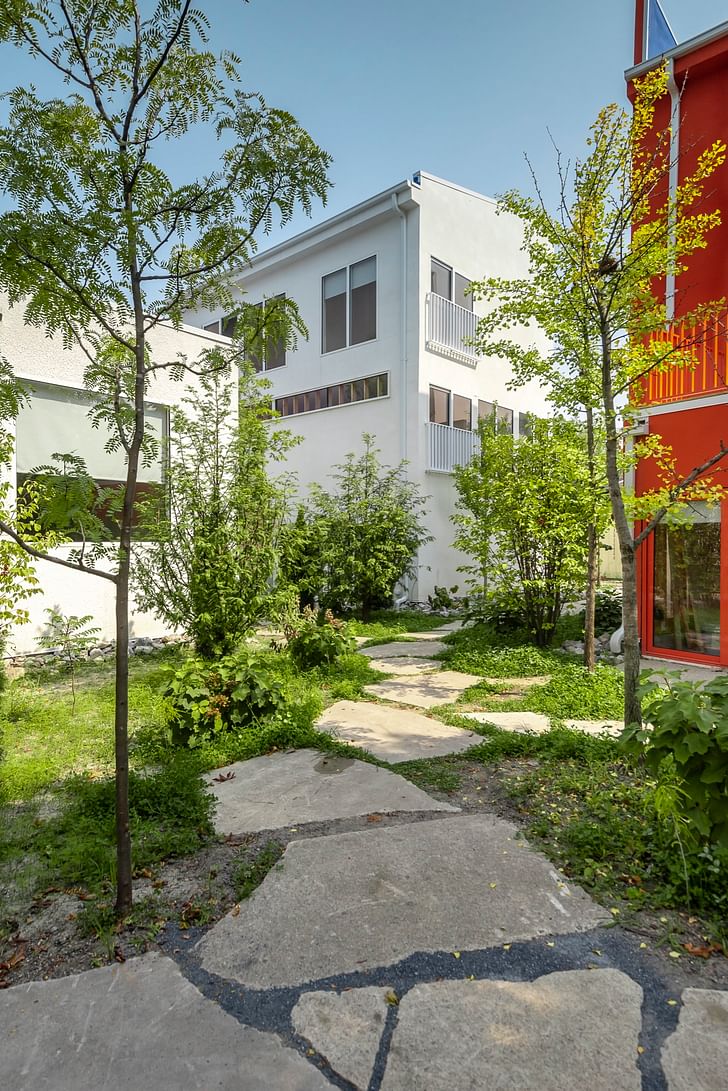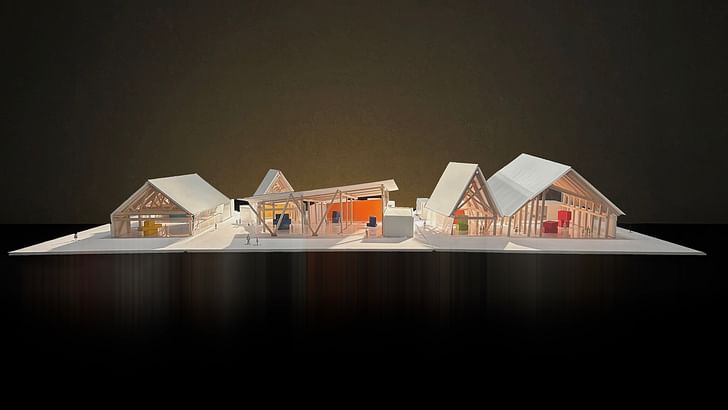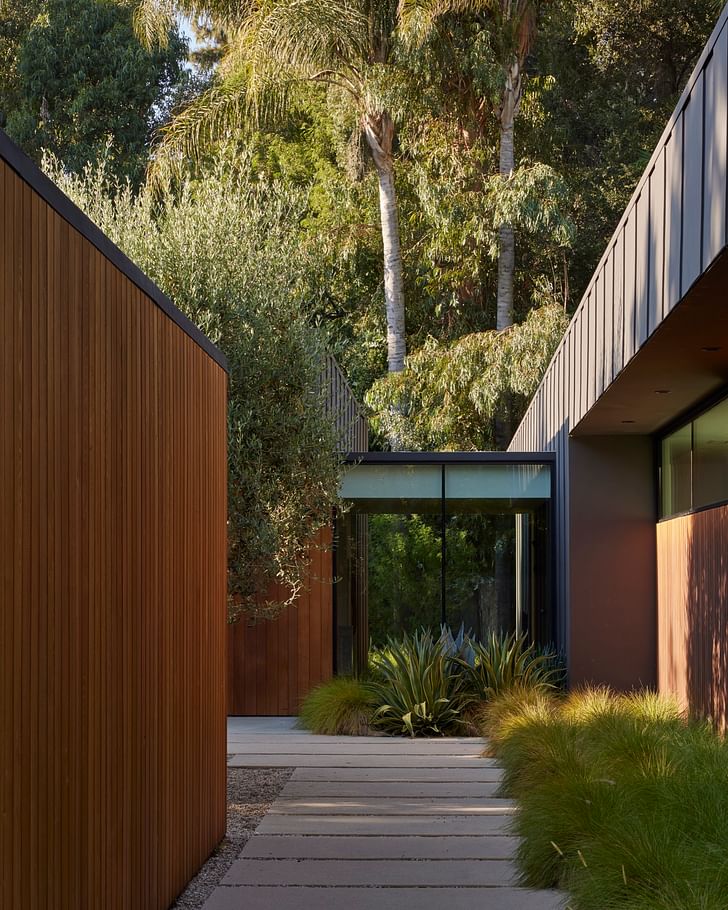

U.S. President Dwight D. Eisenhower once said, “plans are nothing; planning is everything.” This sentiment rings true in architecture, where architects are required to establish project timelines potentially spanning several years for schemes potentially costing millions of dollars. No matter how robust the timeline is at the beginning of the project, however, unforeseen circumstances often threaten to derail our best-laid plans.
To explore how architects can effectively design project timelines, as well as adhere to plans and respond to disruption, we speak with both Assembledge+ founder and principal David Thompson and EC3 founder Edwin Chan for their tips and perspectives.
Project delays are a familiar foe of architectural business. In 2024, our news coverage has included delayed openings for the Gordie Howe International Bridge in Detroit and the LAX Automated People Mover, while in recent years, high-profile projects to experience setbacks include the International African American Museum, the Lucas Museum of Narrative Art, and the Los Angeles County Museum of Art expansion.
These anecdotes of delays are backed up by data. In 2023, a team from the University of Oxford detailed their analysis of 16,000 construction projects around the world, finding that only 8.5% of projects are delivered on time and on budget. Meanwhile, ConstructConnect’s index of project delays and abandonments remains above the benchmark they established in 2021, though its latest data suggests that these trends are improving.
Timelines for architectural projects can slip for many reasons. Some are unpredictable, such as wars, natural disasters, or pandemics. Others are more common, though largely out of the architect’s control, such as funding issues with clients, contractor availability, or permitting delays. Sometimes, delays can emerge from the architect’s side, whether due to staff turnover, design errors or omissions, or overly ambitious schedules.
Regardless of how they happen, project delays can become a headache for all parties. Small delays on one project may compound over time, with knock-on consequences not only for the project in question but for staff availability for other projects. The relationship between the client and architect may also become fraught, particularly if the delays have financial consequences. Careful planning of a timeline is, therefore, a crucial early component during the design process to alleviate, or at least minimize, the potential for later disputes.

For Assembledge+ principal and founder David Thompson, an effective project timeline is created by committing time, effort, and dialogue early in the planning process. A Los Angeles-based firm that “believes in the art of collaboration,” Assembledge+ was recently honored at the 2023 AIA California Residential Architecture Awards with a Climate Action Award for their Laurel Hills Residence.
“In the initial planning stages of a project, we carefully evaluate several key factors that shape the project’s timeline,” Thompson told me recently. “Client directives and priorities, and jurisdictional requirements, are typically the primary considerations.”
“We begin by conducting a thorough discussion with the client to understand their vision, functional requirements, and any unique challenges,” Thompson added. “This allows us to break the project into phases and assign realistic time frames for each.”
In the initial planning stages of a project, we carefully evaluate several key factors that shape the project’s timeline. — David Thompson, founder, Assembledge+
A similar approach is taken by Edwin Chan, who founded the Los Angeles practice EC3 in 2013 having previously served as a Design Partner at Gehry Partners. Incidentally, the Oxford University researchers mentioned earlier in this article have cited Gehry as an instructive example for maintaining project timelines and budgets even in architecturally complex schemes.
Asked what factors EC3 considers when initially planning a project timeline, Chan offered me a list of common questions he asks himself and his team.
“Who is the client?” Chan began. “A private individual who can make all the decisions or a large committee? Where is the project located? In the U.S. or internationally? How does the local construction practice affect the project timeline? How is the project funded? Does it require fundraising that might determine certain milestones? What is the stakeholder/community engagement process and how might that influence the project timeline? What is the lead time for material sourcing such as mass timber, and/or the construction means and methods such as prefab or custom?”
To support Chan's planning, the design phases of EC3’s project timeline are typically anchored by a series of in-person design workshops with the client and project team, organized to meet particular milestones of the project. “Engaging the client in these design workshops by creating a disciplined decision-making framework is an integral strategy to enable the client to take ownership in shaping a realistic project timeline,” Chan told me.

Thompson and Chan both apply consistent approaches across projects in their offices but are willing to make adaptions depending on a project’s scale, typology, or location. At Assembledge+, Thompson will begin with consistent strategies when approaching a project, though the scale and typology will inevitably introduce distinct requirements and challenges that will influence the timeline and merit a unique, independent evaluation.
“For instance, for a hospitality project, it's essential to align with the client’s deadlines and goals, such as opening for a specific season or completing renovations before a key event,” Thompson told me. “We collaborate closely with the client to identify critical milestones and establish realistic expectations. By reviewing key deadlines and factoring in lead times for approvals, material procurement, and potential delays, we create a flexible yet focused schedule that accommodates these priorities.”
At EC3, meanwhile, Chan notes that while the firm’s approach to timelines is generally consistent for each project’s design phases, it will vary for the construction documentation, permit and pricing, and construction administration phases depending on a project’s location and scope. For international projects, the firm will also work closely with a local executive architect to develop timelines for the construction phases.
“For example, a residential project in LA tends to have a longer timeline than a residential project in Detroit, due to the often longer permitting and approval process in California,” Chan told me. “In Europe and Asia, the project delivery processes are different than in the U.S., with early involvements from local contractors/builders in the design process, leading to a typically more streamlined CD phase, but a longer shop-drawing review and mock-up process during the CA phase.”

While careful advanced planning of a project timeline can set architects up for success, the onus is still on them to deliver. Once a project has kicked off, both Thompson and Chan deploy a range of strategies to keep the project on track, from internal communication to software tracking to engaging with collaborators outside of the architect-client team.
“Strong internal communication within our in-house team as well as clear and consistent communication with the broader project team, including stakeholders, consultants, and contractors, is essential,” Thompson explained. “Project management software is a great tool to track key milestones and deadlines, keeping everyone aware of critical upcoming tasks and helping to ensure that dependencies between different phases are managed effectively.”
Engaging the local building/zoning departments early on during the process also plays an important role in getting the local authorities to take ownership in approving the project in a timely way. — Edwin Chan, founder, EC3
Meanwhile, Chan and EC3 will encourage clients to begin the preliminary cost-estimating process by engaging a third-party consultant or contractor to perform pre-construction services. By aligning the design with the client’s budget before final pricing, Chan told me that architects can minimize the need for extensive value engineering later on, which often results in redesign and delays.
“Engaging the local building/zoning departments early on during the process also plays an important role in getting the local authorities to take ownership in approving the project in a timely way,” Chan added. “For example, for a cultural project in Europe, we engaged the city’s architectural committee and officials in city hall with an exhibition of our design process to streamline this city’s notoriously bureaucratic approval procedures that often result in long and extended timelines with multiple submittals and reviews.”

Even for architects who dedicate time and effort to developing robust project timelines, the COVID-19 pandemic demonstrated that the best-laid plans are subject to delays and disruption. While an event as extreme as a pandemic is rare, Thompson offered insight into more common sources of delays faced by firms such as Assembledge+.
“Project timelines are dynamic and need to be reassessed and updated as the project progresses,” Thompson told me. “Common causes for delays include unforeseen site conditions, changes in client scope or direction, and/or regulatory hurdles. Each of these factors can significantly impact the timeline if not addressed proactively.”
Transparency and clear communication are the keys to setting the right expectations with the project timeline. — Edwin Chan, founder, EC3
From his experience at Gehry Partners and EC3, Chan has similarly amassed an awareness of several factors that can cause delays in project timelines. These can include a client taking more time than anticipated to evaluate the design options or changing their mind in the middle of a project, particularly around construction phases. Permitting and approval processes can also take longer than expected, Chan told me, sometimes due to changes in building codes in the middle of the review process, or due to unexpected heritage or infrastructural requirements. Finally, extensive value engineering to align a project’s design or scope with the available budget can cause delays.
“Getting the client, approval agencies, and contractor/fabricators on board early in the design process can help mitigate these delays in the project timeline,” Chan added. “Transparency and clear communication are the keys to setting the right expectations with the project timeline.”

Despite the many steps architects can take to build robust project timelines, we are not the only parties to the timeline. Over on the Archinect Discussion Forum, a contributor recently noted that in recent years, project timelines from clients “have been getting tighter and tighter, and simultaneously, demands and expectations have been getting higher and higher.” The original post attracted several comments from designers sharing similar sentiments and anecdotes. To explore the issue further, I asked Thompson from Assembledge+ if this is an issue he has observed in the industry and what advice he has for colleagues experiencing the trend.
“This has been a challenge in our industry for a very long time,” Thompson told me. “It’s our responsibility to set clear expectations by being vocal and honest about the scope of work and the time required to deliver a successful project. Begin by having an open conversation with the client about what is realistic based on the project scope. Explain the potential risks of rushing, such as compromised quality, higher costs, or unforeseen delays. If the client is set on a tight deadline, explore alternatives that can accelerate specific phases without compromising the overall quality. For instance, pre-fabrication, expediting approvals, or focusing on priority areas first.”
Begin by having an open conversation with the client about what is realistic based on the project scope. — David Thompson, founder, Assembledge+
Likewise, I asked EC3’s Chan if the sentiments shared on our forum align with what he has observed.
“Yes, we have definitely noticed the trend of clients asking for 'unrealistic' timelines,” Chan told me. “In our experience, instead of challenging our clients on their 'unrealistic' timeline, we work with the client to try to understand the motivation/driving factors of their timeline; is it based on fundraising schedule, election cycles, real estate/investment return strategies, institutional calendar, etc.?”
“We then try to reconcile with the client the implications and consequences they need to come to terms with in order to meet the new constraints of the new timeline,” Chan added. “For example, a compressed design process would mean fewer design iterations, and the client will have to commit to a design direction very quickly. A shorter CD phase may lead to using standardized details or prefabricated building systems that the client may not feel is a good fit for their vision of the project.”
“Putting the cause and effects of the 'unrealistic' timeline back into the client’s court is one strategy we often use to arrive at a mutual understanding and expectations of the project’s desired outcome.”
Do you have tips for building and adhering to project timelines in architectural projects? Let us know in the comments.
Niall Patrick Walsh is an architect and journalist, living in Belfast, Ireland. He writes feature articles for Archinect and leads the Archinect In-Depth series. He is also a licensed architect in the UK and Ireland, having previously worked at BDP, one of the largest design + ...
1 Comment
U.S. President Dwight D. Eisenhower once said, “plans are nothing; planning is everything.” - I love this as a development physical planner with a Masters in Public Administration - I know that architecture is viewed as the ultimate creative profession but so much work is done in the project administrative environment before an architectural firm is hire - intellectual creativity is found in all fields - I thoroughly enjoyed this article - Thank You, Niall Patrick Walsh - you're the best ...
Block this user
Are you sure you want to block this user and hide all related comments throughout the site?
Archinect
This is your first comment on Archinect. Your comment will be visible once approved.